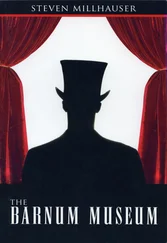Steven Dubner - Freakonomics
Здесь есть возможность читать онлайн «Steven Dubner - Freakonomics» весь текст электронной книги совершенно бесплатно (целиком полную версию без сокращений). В некоторых случаях можно слушать аудио, скачать через торрент в формате fb2 и присутствует краткое содержание. Жанр: Старинная литература, на русском языке. Описание произведения, (предисловие) а так же отзывы посетителей доступны на портале библиотеки ЛибКат.
- Название:Freakonomics
- Автор:
- Жанр:
- Год:неизвестен
- ISBN:нет данных
- Рейтинг книги:3 / 5. Голосов: 1
-
Избранное:Добавить в избранное
- Отзывы:
-
Ваша оценка:
- 60
- 1
- 2
- 3
- 4
- 5
Freakonomics: краткое содержание, описание и аннотация
Предлагаем к чтению аннотацию, описание, краткое содержание или предисловие (зависит от того, что написал сам автор книги «Freakonomics»). Если вы не нашли необходимую информацию о книге — напишите в комментариях, мы постараемся отыскать её.
Freakonomics — читать онлайн бесплатно полную книгу (весь текст) целиком
Ниже представлен текст книги, разбитый по страницам. Система сохранения места последней прочитанной страницы, позволяет с удобством читать онлайн бесплатно книгу «Freakonomics», без необходимости каждый раз заново искать на чём Вы остановились. Поставьте закладку, и сможете в любой момент перейти на страницу, на которой закончили чтение.
Интервал:
Закладка:
If cheating to lose is sport’s premier sin, and if sumo wrestling is the premier sport of a great nation, cheating to lose couldn’t possibly exist in sumo. Could it?
Once again, the data can tell the story. As with the Chicago school tests, the data set under consideration here is surpassingly large: the results from nearly every official sumo match among the top rank of Japanese sumo wrestlers between January 1989 and January 2000, a total of 32,000 bouts fought by 281 different wrestlers.
The incentive scheme that rules sumo is intricate and extraordinarily powerful.
Each wrestler maintains a ranking that affects every slice of his life: how much money he makes, how large an entourage he carries, how much he gets to eat, sleep, and otherwise take advantage of his success. The sixty-six highest-ranked wrestlers in Japan, comprising the makuuchi and juryo divisions, make up the sumo elite. A wrestler near the top of this elite pyramid may earn millions and is treated like royalty. Any wrestler in the top forty earns at least $170,000 a year.
The seventieth-ranked wrestler in Japan, meanwhile, earns only $15,000 a year.
Life isn’t very sweet outside the elite. Low-ranked wrestlers must tend to their superiors, preparing their meals and cleaning their quarters and even soaping up their hardest-to-reach body parts. So ranking is everything.
A wrestler’s ranking is based on his performance in the elite tournaments that are held six times a year. Each wrestler has fifteen bouts per tournament, one per day over fifteen consecutive days. If he finishes the tournament with a winning record (eight victories or better), his ranking will rise. If he has a losing record, his ranking falls. If it falls far enough, he is booted from the elite rank entirely.
The eighth victory in any tournament is therefore critical, the difference between promotion and demotion; it is roughly four times as valuable in the rankings as the typical victory.
So a wrestler entering the final day of a tournament on the bubble, with a 7–7
record, has far more to gain from a victory than an opponent with a record of 8–6
has to lose.
Is it possible, then, that an 8–6 wrestler might allow a 7–7 wrestler to beat him? A sumo bout is a concentrated flurry of force and speed and leverage, often lasting only a few seconds. It wouldn’t be very hard to let yourself be tossed. Let’s imagine for a moment that sumo wrestling is rigged. How might we measure the data to prove it?
The first step would be to isolate the bouts in question: those fought on a tournament’s final day between a wrestler on the bubble and a wrestler who has already secured his eighth win. (Because more than half of all wrestlers end a tournament with either seven, eight, or nine victories, hundreds of bouts fit these criteria.) A final-day match between two 7–7 wrestlers isn’t likely to be fixed, since both fighters badly need the victory. A wrestler with ten or more victories probably wouldn’t throw a match either, since he has his own strong incentive to win: the $100,000 prize for overall tournament champion and a series of $20,000
prizes for the “outstanding technique” award, “fighting spirit” award, and others.
Let’s now consider the following statistic, which represents the hundreds of matches in which a 7–7 wrestler faced an 8–6 wrestler on a tournament’s final day. The left column tallies the probability, based on all past meetings between the two wrestlers fighting that day, that the 7–7 wrestler will win. The right column shows how often the 7–7 wrestler actually did win.
7–7 WRESTLER’S PREDICTED WIN 7–7 WRESTLER’S ACTUAL WIN
PERCENTAGE
AGAINST 8–6 PERCENTAGE
AGAINST 8–6
OPPONENT
OPPONENT
48.7 79.6
So the 7–7 wrestler, based on past outcomes, was expected to win just less than half the time. This makes sense; their records in this tournament indicate that the 8–6 wrestler is slightly better. But in actuality, the wrestler on the bubble won almost eight out of ten matches against his 8–6 opponent. Wrestlers on the bubble also do astonishingly well against 9–5 opponents: 7–7 WRESTLER’S PREDICTED WIN 7–7 WRESTLER’S ACTUAL WIN
PERCENTAGE
AGAINST 9–5 PERCENTAGE
AGAINST 9–5
OPPONENT
OPPONENT
47.2 73.4
As suspicious as this looks, a high winning percentage alone isn’t enough to prove that a match is rigged. Since so much depends on a wrestler’s eighth win, he should be expected to fight harder in a crucial bout. But perhaps there are further clues in the data that prove collusion.
It’s worth thinking about the incentive a wrestler might have to throw a match.
Maybe he accepts a bribe (which would obviously not be recorded in the data).
Or perhaps some other arrangement is made between the two wrestlers. Keep in mind that the pool of elite sumo wrestlers is extraordinarily tight-knit. Each of the sixty-six elite wrestlers fights fifteen of the others in a tournament every two months. Furthermore, each wrestler belongs to a stable that is typically managed by a former sumo champion, so even the rival stables have close ties. (Wrestlers from the same stable do not wrestle one another.)
Now let’s look at the win-loss percentage between the 7–7 wrestlers and the 8–6
wrestlers the next time they meet, when neither one is on the bubble. In this case, there is no great pressure on the individual match. So you might expect the wrestlers who won their 7–7 matches in the previous tournament to do about as well as they had in earlier matches against these same opponents—that is, winning roughly 50 percent of the time. You certainly wouldn’t expect them to uphold their 80 percent clip.
As it turns out, the data show that the 7–7 wrestlers win only 40 percent of the rematches. Eighty percent in one match and 40 percent in the next? How do you make sense of that?
The most logical explanation is that the wrestlers made a quid pro quo agreement: you let me win today, when I really need the victory, and I’ll let you win the next time. (Such an arrangement wouldn’t preclude a cash bribe.) It’s especially interesting to note that by the two wrestlers’ second subsequent meeting, the win percentages revert to the expected level of about 50 percent, suggesting that the collusion spans only two matches.
And it isn’t only the individual wrestlers whose records are suspect. The collective records of the various sumo stables are similarly aberrational. When one stable’s wrestlers fare well on the bubble against wrestlers from a second stable, they tend to do especially poorly when the second stable’s wrestlers are on the bubble. This indicates that some match rigging may be choreographed at the highest level of the sport—much like the Olympic skating judges’ vote swapping.
No formal disciplinary action has ever been taken against a Japanese sumo wrestler for match rigging. Officials from the Japanese Sumo Association typically dismiss any such charges as fabrications by disgruntled former wrestlers. In fact, the mere utterance of the words “sumo” and “rigged” in the same sentence can cause a national furor. People tend to get defensive when the integrity of their national sport is impugned.
Still, allegations of match rigging do occasionally find their way into the Japanese media. These occasional media storms offer one more chance to measure possible corruption in sumo. Media scrutiny, after all, creates a powerful incentive: if two sumo wrestlers or their stables have been rigging matches, they might be leery to continue when a swarm of journalists and TV cameras descend upon them.
So what happens in such cases? The data show that in the sumo tournaments held immediately after allegations of match rigging, 7–7 wrestlers win only 50
Читать дальшеИнтервал:
Закладка:
Похожие книги на «Freakonomics»
Представляем Вашему вниманию похожие книги на «Freakonomics» списком для выбора. Мы отобрали схожую по названию и смыслу литературу в надежде предоставить читателям больше вариантов отыскать новые, интересные, ещё непрочитанные произведения.
Обсуждение, отзывы о книге «Freakonomics» и просто собственные мнения читателей. Оставьте ваши комментарии, напишите, что Вы думаете о произведении, его смысле или главных героях. Укажите что конкретно понравилось, а что нет, и почему Вы так считаете.











